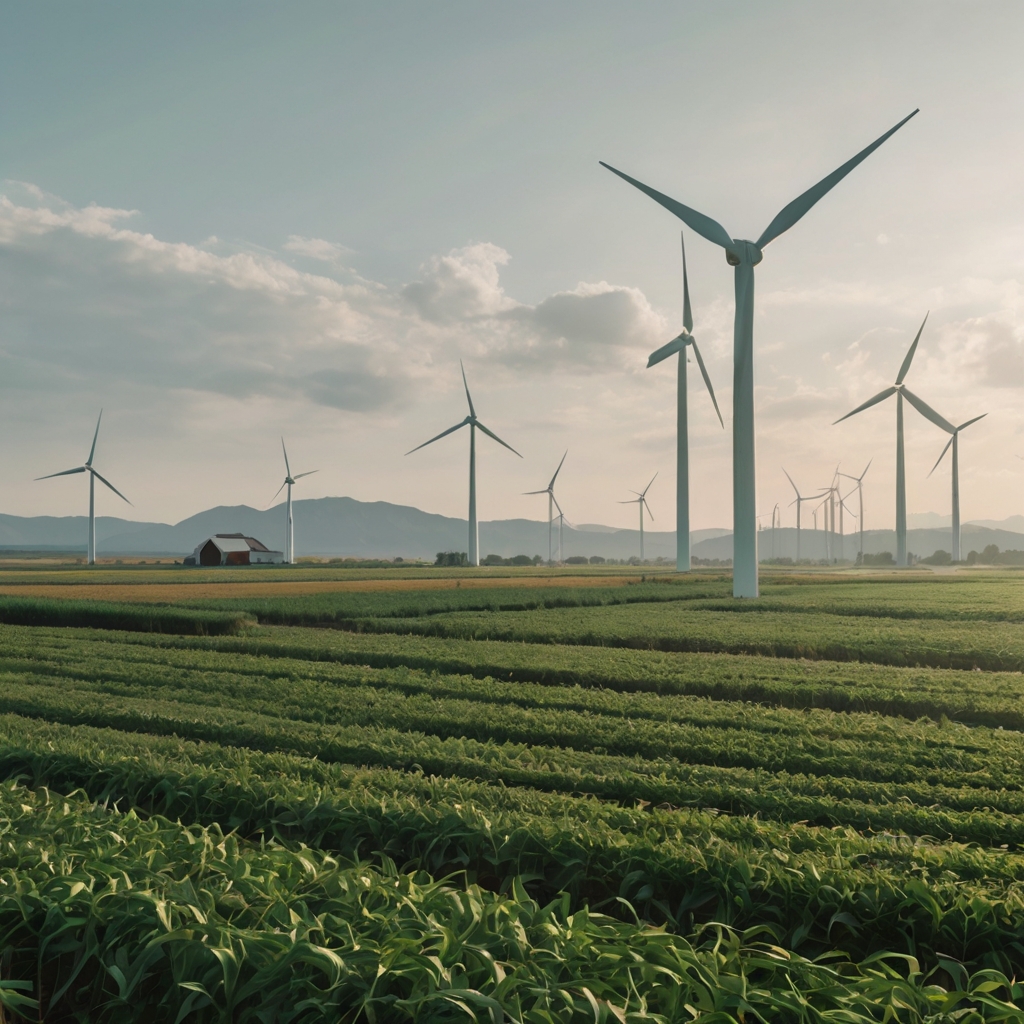How to Adopt Sustainable Agriculture in USA – Practical Guide for Farmers and Communities
How to adopt sustainable agriculture in USA is becoming one of the most important conversations in farming, food production, and environmental policy. Sustainable agriculture is not just about growing crops—it’s about protecting soil health, conserving water, reducing emissions, and ensuring long-term food security. For farmers, businesses, and communities, shifting to sustainable farming practices offers economic benefits, environmental protection, and healthier food systems. This guide explores practical strategies, policies, and real-world solutions that make it possible for anyone involved in agriculture to embrace sustainability while strengthening the future of farming in the United States.
Why Sustainable Agriculture Matters in USA
Sustainable agriculture is about creating balance—producing food while protecting the land, water, and ecosystems that support life. The USA faces challenges like soil erosion, pesticide overuse, and climate change impacts, making sustainable farming more urgent than ever.
Key reasons why it matters:
-
Food Security: Sustainable methods ensure long-term productivity and reduce risks of crop failure.
-
Soil and Water Health: Regenerative practices keep soils fertile and water clean.
-
Climate Action: Reduces carbon footprint through efficient resource use.
-
Economic Resilience: Cuts long-term costs for farmers while opening access to green markets.
Supporting sustainable agriculture means protecting both today’s farmers and future generations.
Core Principles of Sustainable Agriculture
Adopting sustainable agriculture in USA requires following key principles that guide farmers and communities:
-
Soil Health: Using cover crops, crop rotation, and organic compost to keep soil fertile.
-
Biodiversity: Integrating diverse crops and livestock to strengthen ecosystems.
-
Water Efficiency: Employing drip irrigation and rainwater harvesting.
-
Energy Efficiency: Reducing reliance on fossil fuels by using solar or wind power on farms.
-
Community Well-Being: Ensuring fair wages and safe conditions for farm workers.
These principles provide the foundation for a farming system that balances productivity with sustainability.
Practical Ways Farmers Can Adopt Sustainable Agriculture
Farmers in the USA can integrate sustainable practices into their daily operations with small but impactful changes:
-
Crop Rotation and Diversification: Prevents pests and maintains soil nutrients.
-
Reduced Pesticide Use: Switching to integrated pest management lowers harmful impacts.
-
Organic Farming Methods: Using natural fertilizers like compost or manure.
-
No-Till Farming: Preserves soil structure and reduces erosion.
-
Renewable Energy on Farms: Solar panels, wind turbines, and biogas help cut costs and emissions.
These steps make farms more resilient while meeting growing consumer demand for sustainably produced food.
Government Support and Incentives for Sustainable Agriculture
The U.S. government provides programs and funding to help farmers transition toward sustainable agriculture:
-
Natural Resources Conservation Service (NRCS): Offers technical and financial support for soil and water conservation.
-
Sustainable Agriculture Research and Education (SARE) Program: Funds projects that test innovative practices.
-
Conservation Stewardship Program (CSP): Rewards farmers for maintaining long-term sustainable practices.
-
Farm Bill Programs: Includes grants and loans for climate-smart agriculture.
-
Inflation Reduction Act (IRA): Expands investment in renewable energy for farms.
By tapping into these resources, farmers can lower costs while scaling sustainable solutions.
Community and Local-Level Initiatives
Sustainable agriculture isn’t just for large farms—it thrives in local communities. Many grassroots projects are helping cities and towns embrace eco-friendly food systems:
-
Community-Supported Agriculture (CSA): Connects farmers directly with consumers for fresh, local produce.
-
Urban Farming: Rooftop gardens and city farms increase local food availability.
-
Farmers’ Markets: Encourage local, seasonal, and sustainable food purchases.
-
Food Cooperatives: Communities share resources to support small-scale sustainable farms.
Local initiatives show how individuals and neighborhoods can play a role in the bigger picture of sustainable agriculture.
Role of Technology in Sustainable Farming
Technology is accelerating the shift to sustainable agriculture in USA. Innovations include:
-
Precision Agriculture: GPS and sensors help farmers use water, fertilizer, and seeds efficiently.
-
Smart Irrigation Systems: Reduce water waste and optimize crop yields.
-
Drones and Satellite Monitoring: Provide real-time data on soil health and crop conditions.
-
Vertical Farming: Uses less land and water, making food production more sustainable in urban areas.
These technologies make sustainability practical, scalable, and profitable for American farmers.
Investment Opportunities in Sustainable Agriculture
Sustainable agriculture also offers financial opportunities for investors and entrepreneurs:
-
Green Bonds: Finance eco-friendly farming projects.
-
Agri-Tech Startups: Focus on sustainable food systems and precision technology.
-
Impact Investing: Supports companies and farms committed to environmental and social goals.
-
Sustainable Food Brands: Consumer demand for organic and eco-friendly products continues to grow.
Investing in sustainable agriculture is not just profitable—it shapes the future of food in the USA.
Challenges in Adopting Sustainable Agriculture
Transitioning to sustainable farming is rewarding but comes with challenges:
-
High Initial Costs: Equipment and technology can be expensive.
-
Knowledge Gaps: Farmers may need training in sustainable practices.
-
Policy Barriers: Inconsistent state policies can slow adoption.
-
Market Access: Small farmers often struggle to compete with industrial agriculture.
Overcoming these challenges requires collaboration between farmers, policymakers, and consumers.
Future of Sustainable Agriculture in USA
The future of sustainable agriculture in USA is full of promise. With growing awareness, supportive government policies, and technological innovation, the movement toward sustainable farming is gaining momentum. Farmers adopting eco-friendly methods are not only helping the planet but also creating healthier food systems for everyone.
By combining individual action, community efforts, and national policies, the USA can build an agricultural system that ensures food security, protects ecosystems, and drives economic growth.
Final Thoughts
Understanding how to adopt sustainable agriculture in USA is key to building a resilient food system for the future. From soil conservation and renewable energy to government support and technological innovation, every step toward sustainability makes a difference. Farmers, communities, and consumers all play a role in shaping a healthier, greener, and more sustainable agricultural landscape.
By choosing sustainable practices today, the USA can secure tomorrow’s food, climate, and prosperity.















